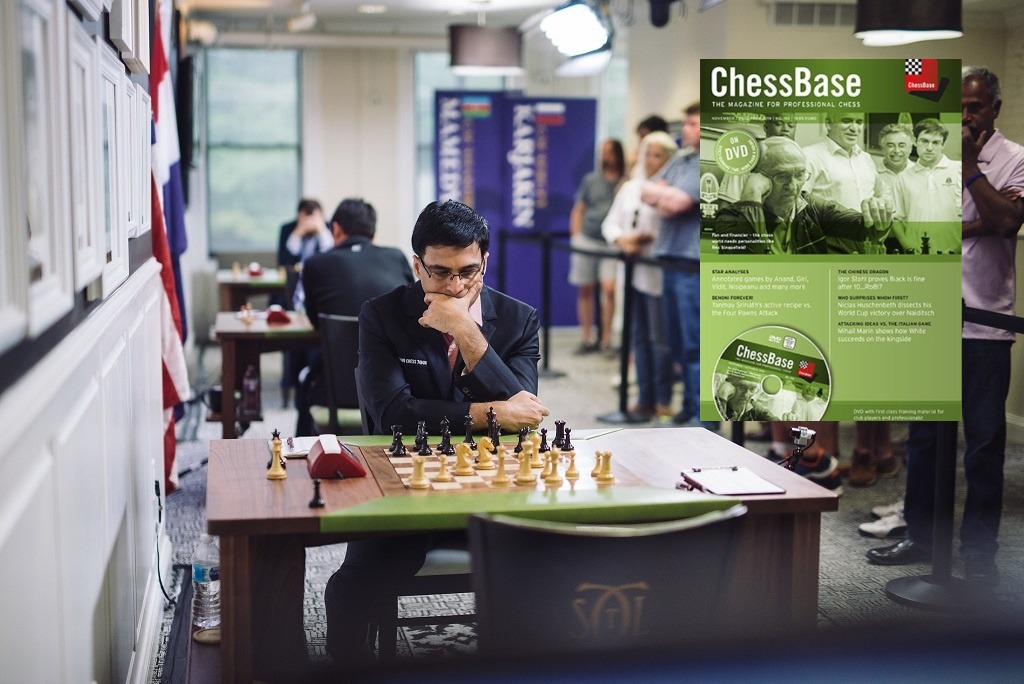A challenge for young readers
In my last article, I dealt with the games of Ding Liren who figured prominently in this issue. This time we shall take a look at the rest of the magazine. The current issue includes games from three important events, Sinquefield Tournament, FIDE World Cup and Russian Championship Superfinal.
First comes the Sinquefield Cup on our list. In this issue, Peter Heine Nielsen has annotated Carlsen's games against Wesley So and Maxime Vachier-Lagrave. I have an old issue with his writing. On occasion, he tends to go overboard in praising the play of Magnus; otherwise his analysis is worth a look. Don't forget that he is the world champion's second and shares his insights with readers.
In this magazine, you also find Anand's annotations of his frustrating draw with Wesley So, in which he missed a win. As is known, he also missed wins over Ding Liren, Anish Giri and Mamedyarov. Here I shall mention the encounter with Mamedyarov.
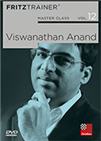 This DVD allows you to learn from the example of one of the best players in the history of chess and from the explanations of the authors how to successfully organise your games strategically, and how to keep your opponent permanently under pressure.
This DVD allows you to learn from the example of one of the best players in the history of chess and from the explanations of the authors how to successfully organise your games strategically, and how to keep your opponent permanently under pressure.
Vishy Anand on the background, as Shakhriyar Mamedyarov ponders how to continue | Photo: Justin Kellar / Grand Chess Tour
Early in the game Anand was one pawn up. Instead of regaining the pawn, Mamedyarov offered him another and launched a brilliant counterattack. In the end it was a draw. Subsequently, analysts found a win in the following position. The challenge for young readers is to see what he missed.
Set your chess clock and give yourself a generous 10-minute time limit. Otherwise, tournament conditions have to be followed. It’s touch and move and you are not going to ask good old Fritz for advice...
Are you ready? 10 minutes are over. Some of you have played like Tal himself. As a result, you are a whole rook down! But where is the win? (Scroll down for the solution if you haven’t found it yet!)
Fate plays the game of dice
How else can one describe the play in the FIDE World Cup? Inspiration collided with insanity in this marathon event. This issue has more than 430 games — of which 12 are annotated. Anish Giri has annotated the games Radjabov vs Vachier Lagrave and Ding Liren vs YuYangyi from the semi-finals.
So make it a point to check out those games in the magazine. The quarter-finals were also hard-fought. The following is a tragicomedy:
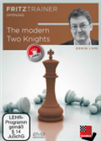 The Two Knights Defence is one of the oldest opening lines in chess history. This DVD is aimed at players of both sides, giving an objective overview of all relevant theoretical lines.
The Two Knights Defence is one of the oldest opening lines in chess history. This DVD is aimed at players of both sides, giving an objective overview of all relevant theoretical lines.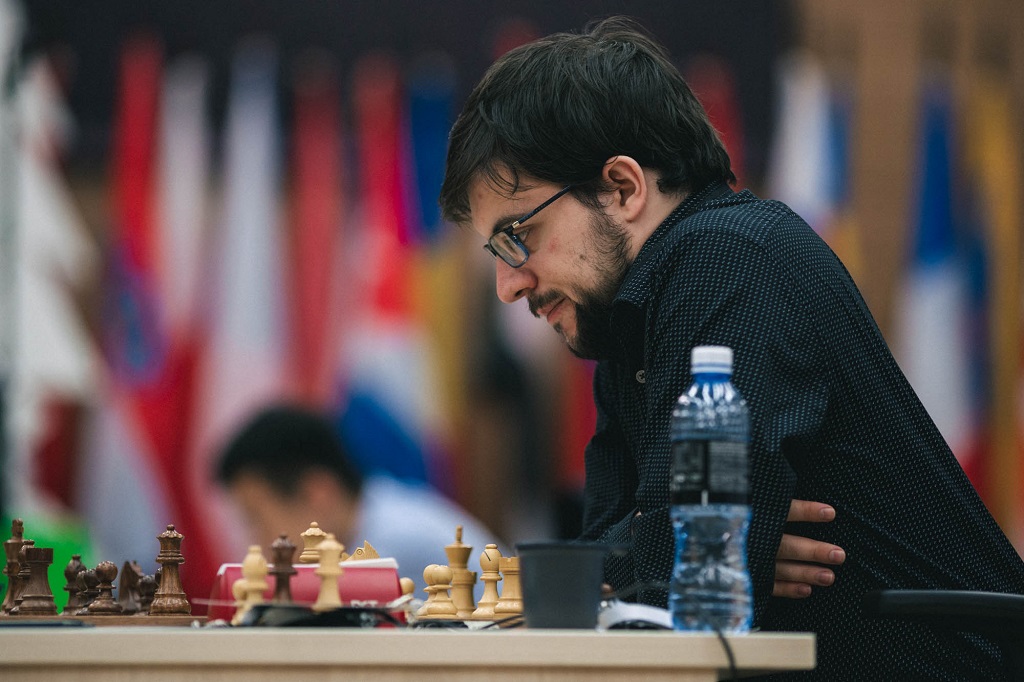
Maxime Vachier-Lagrave was knocked out of the World Cup in the semi-finals | Photo: FIDE
This brings us to games from the 72nd Russian Superfinal included in the magazine. The absence of players like Nepomniachtchi, Grischuk and Karjakin left a void. However, the performance of Tomashevsky and Vitiugov — who came first and second — redeemed the event a bit. While European Champion Vladislav Artemiev disappointed, other talents like Alekseenko shone. Nikita Vitiugov was a little unlucky to finish half a point behind Tomashevsky. I was particularly impressed by the standard of his play and the quality of annotations to the following game.
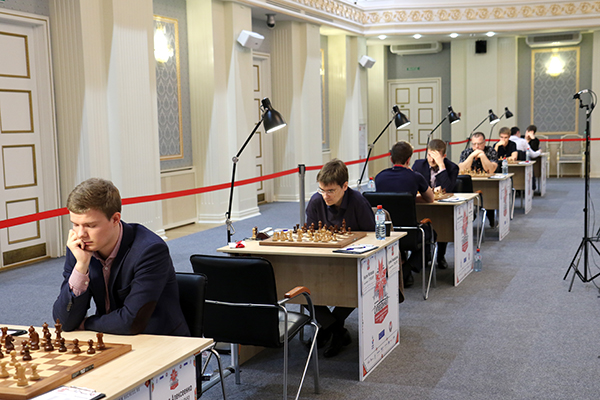
The playing hall at this year's Russian Superfinal | Photo: Eteri Kublashvili
Apart from standard features on middlegame tactics, endgame play and training, this issue has as many as eleven opening surveys, ranging from the Caro-Kann to the King's Indian. Among them, Igor Stohl’s commentary on the Chinese Dragon and Tanmay Srinath’s analysis of the Four Pawns Attack against the Modern Benoni merit special mention. Stohl mentions, inter alia, how the Chinese Dragon got its name: Belgian FM Luc Henris spent some years in China and during those days he analysed this variation. When he wrote an article on the same for the New in Chess Yearbook 2002 he gave it this name and it stuck.
Among the opening videos Alexie Shirov’s commentary on the Najdorf with 6.h3 e5 7.♘b3 merits special mention. For reasons of space, I have not dealt with these opening surveys and videos here, as they deserve a more detailed consideration.
Analyses by Giri, Anand, Nisipeanu, Huschenbeth, Vidit, Vitiugov, Tomashevsky and many more. Plus videos by King, Shirov and l'Ami, 11 opening articles with new repertoire ideas and training sessions in strategy, tactics and endgame!
The main database of the issue has 1949 recent games, of which 28 are deeply annotated. Apart from the GMs I have already mentioned, the commentators include Niclas Huschenbeth, Liviu-Dieter Nisipeanu, Rustam Kasimdzhanov and Evgeny Tomashevsky, among others. It may be pointed out that there are more annotated games in the sections on opening theory and training.
Recommended.
Links
